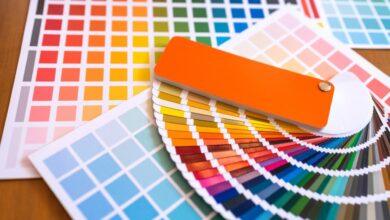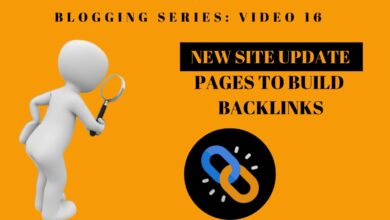
Why Should I Hire a Professional Web Designer?
Why should I hire a professional web designer? That’s the million-dollar question many business owners grapple with. Building a website might seem like a simple DIY project, but the reality is far more complex. A professional designer brings a wealth of expertise, saving you time, boosting your ROI, and ultimately, helping you build a brand that truly shines online.
Let’s dive into why outsourcing this crucial task is often the smartest move.
From crafting a user-friendly experience that converts visitors into customers to ensuring your site is technically sound and optimized for search engines, a pro handles everything. They understand the nuances of design, development, and digital marketing, ensuring your website isn’t just pretty, but also effective. This isn’t just about aesthetics; it’s about building a powerful online presence that drives results.
Professionalism and Expertise
Choosing a web designer is a significant decision impacting your online presence and business success. The difference between a professional and someone with basic skills is vast, extending far beyond mere aesthetics. A professional brings a wealth of knowledge, experience, and a strategic approach that amateur designers often lack.The core difference lies in the systematic approach to design.
A professional web designer understands the intricate relationship between design, functionality, and business goals. They don’t just create visually appealing websites; they craft digital experiences tailored to achieve specific objectives, be it increased sales, brand awareness, or lead generation.
User Experience (UX) and User Interface (UI) Design Expertise
Professional web designers possess a deep understanding of UX/UI principles. This expertise ensures that your website is not only beautiful but also intuitive and user-friendly. They conduct thorough user research, create user personas, and design information architecture to optimize navigation and user flow. For example, a professional might employ A/B testing to compare different design layouts and determine which version best converts visitors into customers.
This data-driven approach is crucial for maximizing the effectiveness of your website. An amateur designer, on the other hand, may rely on intuition or personal preferences, potentially leading to a website that is visually appealing but functionally flawed.
Website Accessibility and Responsiveness
Professional designers prioritize website accessibility, ensuring it’s usable by people with disabilities. This involves adhering to WCAG (Web Content Accessibility Guidelines) standards, which include features like alternative text for images, proper heading structure, and keyboard navigation. They also ensure responsiveness, meaning the website adapts seamlessly to different screen sizes (desktops, tablets, smartphones). A professional designer might use responsive frameworks like Bootstrap or build custom solutions to ensure optimal viewing across all devices.
Conversely, a website designed by someone lacking this expertise might be difficult to navigate on mobile devices or inaccessible to users with visual impairments, leading to a poor user experience and potentially legal repercussions.
Long-Term Cost Comparison
While hiring a professional web designer may seem more expensive upfront, the long-term cost savings are substantial. An unprofessional design might require frequent updates, bug fixes, and redesigns due to poor initial planning and execution. These repeated costs can significantly outweigh the initial investment in a professional. For example, a poorly coded website might require costly remediation to address security vulnerabilities or issues down the line.
A professional designer, however, builds a robust and scalable website from the start, minimizing future expenses and maximizing return on investment. Consider a scenario where an amateur designer creates a website that fails to attract customers due to poor UX; the lost revenue far exceeds the cost of hiring a professional from the outset.
Time Savings and Efficiency: Why Should I Hire A Professional Web Designer

Source: bridge-global.com
Let’s face it: building a website, even a simple one, is time-consuming. Between choosing a domain name, selecting a platform, learning coding basics (or wrestling with website builders), uploading content, and optimizing for search engines, the hours can quickly add up. A professional web designer, however, streamlines this entire process, freeing up your valuable time to focus on what truly matters: running your business.Professionals possess the skills and experience to navigate the complexities of web design efficiently.
They understand the intricacies of various platforms, possess mastery of design software, and have established workflows for creating and launching websites. This translates directly into significant time savings for you, compared to the often-frustrating, time-intensive process of attempting a DIY approach. This efficiency isn’t just about saving time; it’s about leveraging that saved time to enhance your business’s productivity and overall growth.
Time Comparison: DIY vs. Professional Web Design
A well-designed website is a crucial tool for business success. An efficient design process ensures your website is launched quickly, allowing you to start attracting customers and generating revenue sooner. Conversely, a drawn-out DIY process can delay your launch, impacting your potential earnings and overall market presence. The table below illustrates a typical time commitment comparison between DIY and professional website development.
These are estimates, and the actual time required will vary depending on the complexity of the website.
| Phase | DIY Time (Estimated) | Professional Time (Estimated) | Cost Difference (Illustrative Example) |
|---|---|---|---|
| Planning & Research | 20-40 hours | 5-10 hours | $0 (DIY) vs. $500-$1000 (Professional – includes consultation) |
| Design & Mockups | 30-60 hours | 10-20 hours | $0 (DIY) vs. $1000-$2000 (Professional – design fees) |
| Development & Content Upload | 50-100+ hours | 20-40 hours | $0 (DIY) vs. $1500-$3000 (Professional – development fees) |
| Testing & Launch | 10-20 hours | 5-10 hours | $0 (DIY) vs. $250-$500 (Professional – testing & launch support) |
Note: The cost difference column provides arough* illustrative example. Actual costs will vary significantly based on the designer’s fees, website complexity, and location. The DIY time estimates assume a moderate level of technical proficiency. Lack of experience can drastically increase this time.
Impact on Business Productivity
The time saved by using a professional web designer directly translates to increased business productivity. Instead of spending weeks or months struggling with website development, you can focus on core business activities such as marketing, sales, product development, and customer service. This focused effort leads to higher efficiency, faster growth, and ultimately, increased profitability. For example, a small business owner who saves 100 hours on website development can dedicate that time to client acquisition, potentially generating significantly more revenue than the cost of hiring a professional.
Streamlined Development Process
Professional web designers employ efficient project management techniques and streamlined workflows. They typically follow a well-defined process, starting with a clear understanding of your business goals and target audience. This ensures that the website is built with a specific purpose and delivers measurable results. They handle all aspects of the process, from initial concept and design to development, testing, and launch, ensuring a seamless and timely completion.
This structured approach minimizes delays and potential setbacks, unlike the often unpredictable and iterative process of DIY website building.
Return on Investment (ROI)
Investing in a professional web design isn’t just an expense; it’s a strategic investment that can significantly boost your business’s bottom line. A well-designed website acts as your 24/7 salesperson, attracting customers, building brand credibility, and ultimately driving sales. Understanding the return on that investment is crucial for any business owner.A professionally designed website offers numerous avenues for demonstrable ROI.
So you’re thinking about boosting your online presence, right? A professional web designer ensures your site not only looks great but also functions flawlessly, driving traffic and conversions. Think about how important a strong online presence is for things like, say, successfully promoting your YouTube channel – check out this great guide on getting it on with youtube to see what I mean! A polished website is key to complementing those efforts and maximizing your reach.
Ultimately, hiring a pro means investing in a solid foundation for your online success.
Key metrics include increased website traffic, higher conversion rates (leading to more sales and leads), improved brand perception, and reduced customer acquisition costs. These improvements directly translate into tangible financial benefits that far outweigh the initial design costs.
Website Performance Metrics and Conversion Rates
Improved website design directly impacts key performance indicators (KPIs) that demonstrate a strong ROI. For instance, a clean, intuitive design with clear calls to action can significantly increase conversion rates – the percentage of visitors who complete a desired action, such as making a purchase, filling out a form, or subscribing to a newsletter. A study by the Baymard Institute consistently shows that poor website design significantly reduces conversion rates.
Conversely, a well-structured website with optimized user experience leads to higher conversion rates, resulting in increased revenue. For example, improving the checkout process alone can often yield a double-digit percentage increase in completed transactions. This translates to a direct increase in profit margins.
Hypothetical Scenario: Professional vs. Poorly Designed Website
Let’s imagine two competing businesses, both selling handmade jewelry online. Business A invests in a professionally designed website with high-quality photography, clear product descriptions, and a seamless checkout process. Business B opts for a cheap, poorly designed website with blurry images, confusing navigation, and a clunky checkout process. Over a year, Business A sees a 15% conversion rate, converting 15 out of every 100 visitors into customers.
Business B, with its poor design, only manages a 5% conversion rate. If both businesses receive 10,000 website visitors per month, Business A generates 1500 sales, while Business B generates only 500. Even with a higher initial investment in web design, Business A’s increased sales significantly outweigh the cost of the professional design, demonstrating a substantial ROI.
Search Engine Optimization () and Organic Traffic, Why should i hire a professional web designer
A well-designed website is crucial for effective search engine optimization () and attracting organic (non-paid) traffic. A professional designer understands best practices and can implement them during the design process, leading to better search engine rankings.
- Improved website speed: Faster loading times improve user experience and boost search engine rankings.
- Mobile responsiveness: A mobile-friendly design is essential for reaching a wider audience and improving search rankings.
- Structured data markup: Implementing schema markup helps search engines understand your website’s content, improving visibility.
- Optimized images and alt text: Using relevant s in image alt text improves search engine visibility.
- Clear site architecture and internal linking: A well-structured website with logical internal links makes it easier for search engines to crawl and index your content.
These improvements lead to higher organic search rankings, resulting in increased website traffic and, ultimately, more customers and higher revenue. The long-term benefits of improved organic traffic far outweigh the initial investment in professional web design.
Brand Building and Visual Identity
Your website is often the first impression your business makes on potential customers. A professional web designer understands the crucial role visual elements play in establishing a strong and memorable brand identity. They go beyond simply making your website look pretty; they craft a visual language that communicates your brand’s values, personality, and unique selling proposition.A consistent brand identity isn’t just about aesthetics; it’s about building trust and recognition.
When your branding—logo, color palette, typography, imagery—is consistent across your website, social media, marketing materials, and even your physical storefront (if applicable), it creates a cohesive and professional image in the minds of your customers. This consistency reinforces your brand message, making it more impactful and memorable. Inconsistency, on the other hand, can confuse customers and dilute your brand’s power.
Brand Consistency Across Platforms
Professional designers ensure brand consistency by creating a style guide. This document acts as a blueprint for all visual elements, outlining specifications for logo usage, color palettes (including hex codes), typography (font families and sizes), and image styles. This ensures that every element, from the smallest button to the largest hero image, aligns perfectly with your brand’s visual identity. For example, a designer might specify that the primary brand color (#007bff, for instance) should be used for call-to-action buttons across all pages and marketing materials, while a secondary color (#6c757d) is used for less prominent elements.
This meticulous attention to detail ensures a unified and professional online presence.
Creating a Memorable Visual Identity
Creating a memorable visual identity involves understanding your target audience and your brand’s unique personality. A designer will work with you to define these key aspects and translate them into a compelling visual language. This might involve selecting a logo that is both visually appealing and representative of your brand’s values, choosing a color palette that evokes the desired emotions (e.g., calming blues for a spa, vibrant reds for a fast-food restaurant), and using typography that reflects your brand’s tone (e.g., a modern sans-serif font for a tech company, a classic serif font for a law firm).
Consider the logo of Apple: a simple, yet iconic apple, instantly recognizable and associated with high-quality design and technology. Their consistent use of this logo and a minimalist design language across all platforms has cemented their brand recognition.
Technical Expertise and Optimization
A professional web designer possesses a deep understanding of the technical intricacies crucial for a successful online presence. This goes beyond aesthetics; it encompasses the underlying architecture that dictates website performance, security, and search engine visibility. Ignoring these technical aspects can severely limit your website’s potential.Professional web designers expertly handle various technical aspects that significantly impact your website’s success.
This expertise ensures your website not only looks great but also functions flawlessly and ranks highly in search engine results.
Search Engine Optimization () Integration
is not an afterthought; it’s an integral part of the design and development process for a professional. They strategically integrate best practices from the initial planning stages. This includes research to understand what your target audience is searching for, optimizing page titles and meta descriptions for improved search engine rankings, and structuring the website’s content in a way that is easily understood by both users and search engine crawlers.
They also build websites with clean, semantic HTML, which helps search engines understand the content and structure of your site. Furthermore, they handle aspects like schema markup, which provides search engines with extra context about your website’s content, leading to richer search results.
Website Security Measures
Website security is paramount. A professional designer implements robust security measures to protect your website and your users’ data from cyber threats. This includes using secure hosting, implementing HTTPS encryption to secure data transmitted between the website and users’ browsers, regularly updating software and plugins to patch vulnerabilities, and implementing firewalls to block malicious traffic. Failing to prioritize security can lead to data breaches, financial losses, and damage to your brand’s reputation.
A professional proactively mitigates these risks. For example, regular security audits and penetration testing can identify and address potential vulnerabilities before they are exploited.
Responsive Web Design and Mobile Optimization
Responsive design is the practice of building websites that adapt seamlessly to different screen sizes and devices. This means your website will look and function perfectly on desktops, laptops, tablets, and smartphones. A professional designer utilizes responsive design techniques, ensuring a consistent and optimal user experience across all platforms. This is crucial because a significant portion of internet traffic now comes from mobile devices.
A website that isn’t mobile-friendly will likely lose visitors and potential customers.Imagine a website that looks like this: On a large desktop screen, you see a beautifully laid-out webpage with clear navigation and ample content. As the screen size shrinks to that of a tablet, the layout automatically adjusts, perhaps collapsing columns into a single vertical flow.
On a smartphone, the content further reflows, prioritizing essential information and making navigation intuitive via touch controls. The images and text resize proportionately, ensuring readability and optimal viewing on every device. This seamless adaptation across different screen sizes is what responsive design achieves, providing a positive user experience regardless of the device used to access the website. This ensures your website remains accessible and engaging to a wider audience.
Ongoing Support and Maintenance
Building a website is only half the battle. Ensuring its continued health, performance, and security requires ongoing support and maintenance. This is where a professional web designer truly shines, offering expertise far beyond the initial design phase. Think of it as regular check-ups for your online presence – crucial for long-term success and avoiding costly downtime.A professional web designer doesn’t just hand over a finished website and disappear.
They provide ongoing support to address issues, implement updates, and proactively maintain your site’s performance and security. This proactive approach prevents minor problems from escalating into major headaches, saving you time, money, and frustration in the long run.
Common Website Issues and Their Solutions
Website problems can range from minor annoyances to significant disruptions. A professional designer is equipped to handle a wide array of issues efficiently. For example, a broken link might seem insignificant, but it impacts user experience and . A professional would quickly identify and fix this, ensuring a seamless browsing experience. Similarly, slow loading speeds can drastically affect bounce rates.
A designer would investigate the cause, perhaps optimizing images or identifying inefficient code, to improve site performance. Security breaches, like malware infections, are another serious concern. A professional designer can implement security measures and quickly remove any malicious code, protecting your website and your visitors’ data.
Importance of Regular Updates and Security Patches
Regular updates and security patches are non-negotiable for website maintenance. Software updates often include critical bug fixes, performance enhancements, and crucially, security patches that protect against vulnerabilities. Outdated software is a prime target for hackers, leaving your website exposed to attacks that could compromise data, damage your reputation, and even lead to legal repercussions. A professional web designer stays current with the latest software versions and security protocols, ensuring your website remains protected and up-to-date.
Failing to update can result in significant financial losses and reputational damage due to security breaches or downtime. For example, a small business website suffering a data breach could face fines, loss of customer trust, and the cost of recovery.
Common Website Maintenance Tasks
A professional web designer handles a variety of tasks as part of ongoing website maintenance. These tasks are essential for keeping your website running smoothly, securely, and effectively.
- Regular backups of website files and databases.
- Security audits and malware scans.
- Software updates and plugin maintenance.
- Performance monitoring and optimization.
- Broken link checking and repair.
- Content updates and revisions.
- optimization and monitoring.
Epilogue

Source: techbear.com
Ultimately, the decision of whether to hire a professional web designer comes down to your priorities and long-term goals. While the initial investment might seem significant, the return on investment – in terms of time saved, increased sales, and a stronger brand – far outweighs the cost. A professional web designer is an investment in your business’s future, a strategic move that ensures your online presence is not only visually appealing but also a powerful tool for growth and success.
Don’t underestimate the power of a well-designed website – it’s the digital face of your brand.
Essential Questionnaire
What if I have some basic design skills? Why still hire a professional?
Even with basic skills, a professional brings expertise in areas like UX/UI, optimization, and responsive design that are crucial for success, saving you significant time and frustration.
How much does a professional web designer cost?
Costs vary greatly depending on project scope and designer experience. It’s best to get quotes from several designers to find a fit for your budget.
How long does it take to get a website designed professionally?
Timeline depends on project complexity, but expect a few weeks to several months for a complete website build, depending on the designer’s workflow.
Can I make changes to the website after it’s launched?
Most designers offer ongoing maintenance and support packages for updates and modifications after launch.





